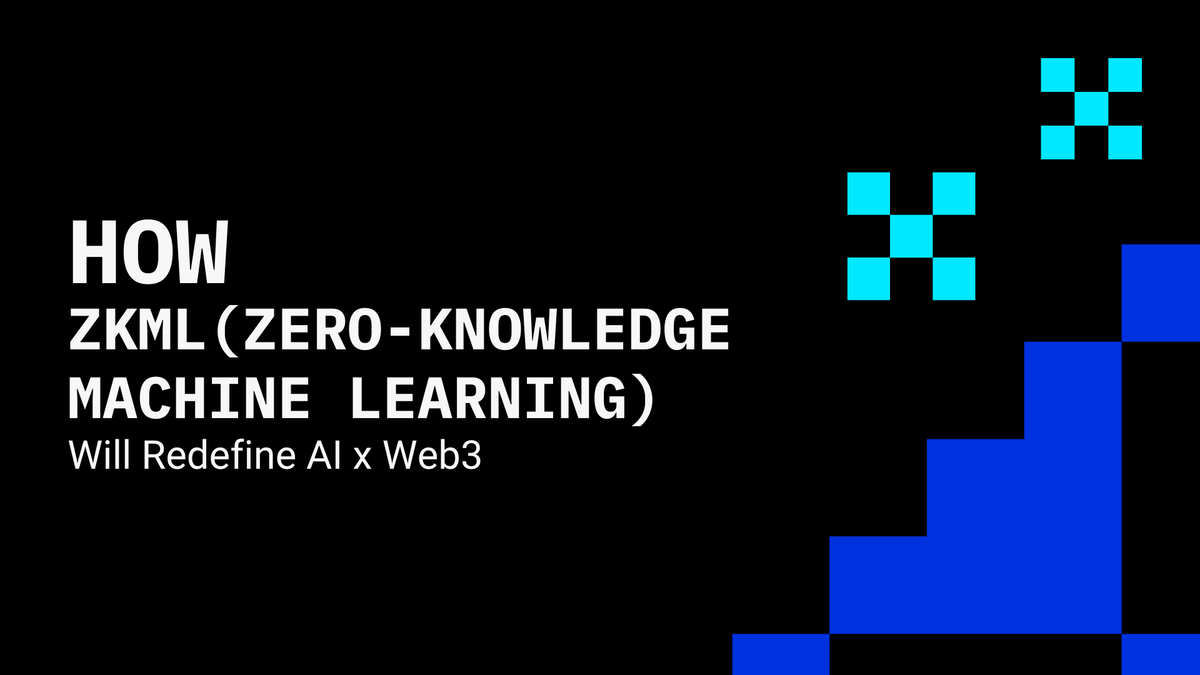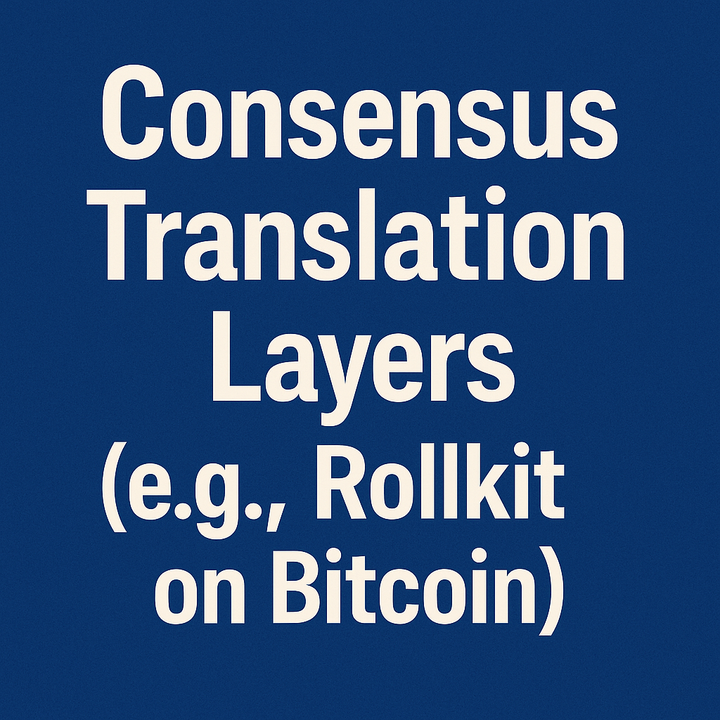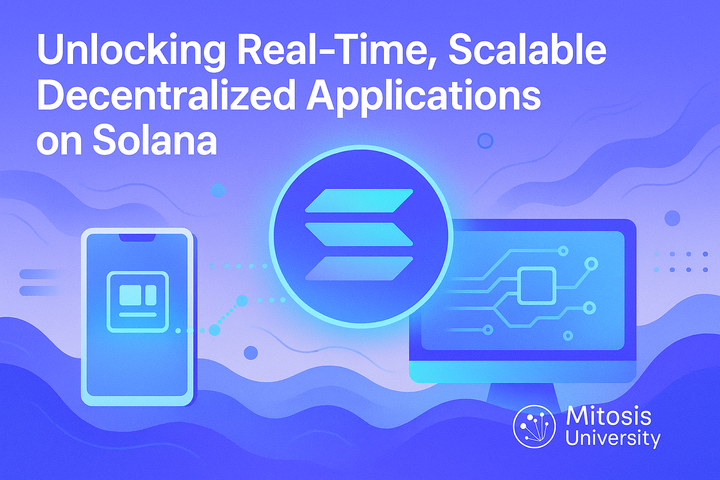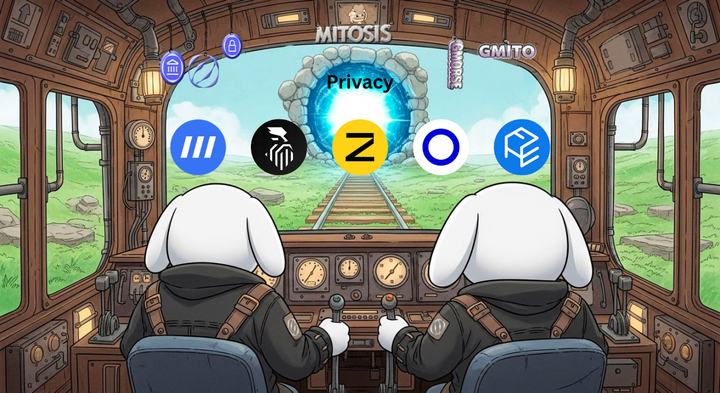How zkML (Zero-Knowledge Machine Learning) Will Redefine AI x Web3

Introduction
As Web3 grows in complexity and ambition, its integration with Artificial Intelligence (AI) is inevitable. But marrying AI's opaque decision-making processes with the transparent, trustless nature of blockchain is no small feat. Enter zkML (Zero-Knowledge Machine Learning), a novel approach that allows machine learning computations to be proven, verified, and executed without revealing sensitive data. zkML offers a trustless, privacy-preserving bridge between AI and Web3, potentially unlocking new categories of decentralized applications.
What is zkML?
zkML (Zero-Knowledge Machine Learning) combines zero-knowledge proofs (ZKPs) with machine learning (ML). In essence, zkML allows someone to prove that an ML model produced a specific result on a given input, without revealing the model, the input, or even the computation itself.
This is achieved using ZK-SNARKs or ZK-STARKs, cryptographic proof systems that let you verify computation integrity without re-running the process. This means:
- The model can stay private
- The input data can remain confidential
- The output can be verified as correct
In traditional AI systems, you must trust the operator and the data pipeline. zkML removes that trust requirement by offering verifiability, privacy, and decentralization.
Why zkML Matters for Web3
The decentralized nature of Web3 calls for transparent and verifiable computation. AI, in contrast, often operates as a black box; models are proprietary, decisions are difficult to interpret, and outputs can’t be independently verified. zkML addresses these mismatches by enabling:
- Verifiable AI Outputs: You can prove that an AI agent made a decision based on a specific logic without revealing the underlying model.
- On-chain Execution of AI Inference: ML models can run within smart contracts without requiring trusted off-chain oracles.
- Preservation of Data Privacy: zkML enables the use of private data in training or inference without exposing it publicly.
This synergy unlocks privacy-preserving AI agents, decentralized AI governance, and trustless AI predictions, enabling new types of dApps previously impossible due to Web3’s public-by-default nature.
Key zkML Projects Pioneering the Future
1. EZKL
EZKL is a Rust-based framework that compiles machine learning models into ZK circuits using Halo2. It allows developers to generate proofs of inference for ONNX models, a common open format for AI models.
Key Features:
- Supports complex models like CNNs and transformers.
- Integrates with Ethereum and other chains for on-chain verification.
- Focused on performance and developer usability.
EZKL is ideal for building AI models that can run locally and then provide on-chain verifiable results. This is particularly useful for identity verification, fraud detection, or even autonomous AI agents.
2. Giza
Giza is focused on verifiable inference for Cairo-based ZK rollups, such as StarkNet. Unlike other frameworks, Giza compiles ML models into Cairo assembly, the native language for STARKs. It leverages ZK-STARKs for scalable, post-quantum safe proof generation.
What makes Giza unique:
- It is tailor-built for StarkNet, enabling native zkML apps in that ecosystem.
- Emphasizes provable AI agents, particularly for game theory, DeFi strategies, and autonomous on-chain logic.
- Offers a pipeline to convert ML models into Cairo using their compiler stack.
3. Modulus Labs
Modulus Labs is pioneering "verifiable AI" that runs on-chain. Their tagline says it all: “AI you can trust, because you can verify.” Modulus creates ZK proofs for models and has built proof systems to demonstrate AI playing games, making decisions, and running neural nets, all provably correct.
Examples include:
- ZK-AI playing Tic-Tac-Toe and Chess.
- Trustless ML agents that predict market movements.
- On-chain logic with AI advisors and agents.
Modulus Labs' broader ambition is to make any AI-powered decision verifiable on-chain, bridging the trust gap between human users and algorithmic agents.
Use Cases: How zkML Will Transform AI x Web3
1. On-chain AI Agents
Imagine deploying an AI agent on Ethereum that can trade tokens, provide liquidity, or moderate content, without any human intervention. zkML allows these agents to prove that:
- Their logic follows a verifiable model.
- Their decisions are based on validated inputs.
- Their output is cryptographically proven to be the result of a legitimate inference.
2. Privacy-Preserving Predictions
Consider a prediction market where users can submit sensitive data (e.g., medical, financial) to AI models. With zkML:
- Data stays private
- Model outputs can be verified
- Predictions can be made on-chain
This has implications for insurance, DeFi hedging strategies, health analytics, and election forecasting.
3. GameFi and On-chain Games
Game logic often involves randomness, decision trees, and dynamic strategy, perfect for AI. zkML allows:
- AI bots that prove their moves follow the game rules.
- Cheat-proof games with AI opponents.
- Provable randomness and fairness.
4. Identity and Biometric Verification
In Web3, proving someone’s identity without leaking personal data is a massive challenge. zkML can be used to:
- Run face or voice recognition models
- Prove the match without revealing the face or voice
- Allow identity-as-a-service in decentralized identity systems (DID)
This fits perfectly into ecosystems like Worldcoin and Proof of Humanity.
5. AI Governance and DAO Agents
zkML can power AI agents that vote in DAOs, suggest governance changes, or manage treasury allocations based on provable logic. No opaque algorithms, just transparent, verifiable decision-making.
Challenges to Overcome
- Computation Cost: Generating and verifying ZK proofs for large models (e.g., GPT-like transformers) is still computationally expensive.
- Latency: zkML isn’t real-time. Current tools involve off-chain proving and on-chain verification cycles.
- Limited Model Complexity: Only relatively simple models (e.g., MLPs, small CNNs) are currently feasible in most zkML systems.
- Tooling and Ecosystem Maturity: Tools like EZKL and Giza are promising but still early-stage.
However, as ZK hardware accelerators improve and new proving systems like Succinct’s SP1 evolve, these limitations will shrink.
Conclusion
zkML is still in its infancy, but it represents a seismic shift in how AI and blockchain can coexist. By making machine learning verifiable, privacy-preserving, and trustless, zkML opens the door to a whole new category of decentralized applications, from autonomous finance to verified gaming and secure identity.
For developers, builders, and protocol designers, now is the time to start experimenting with zkML frameworks and ideating on applications that require AI but cannot compromise on trust. The first generation of zkML-powered dApps will define what the future of AI x Web3 looks like, and we’re just getting started.
References
MITOSIS official links:
GLOSSARY
Mitosis University
WEBSITE
X (Formerly Twitter)
DISCORD
DOCS



Comments ()